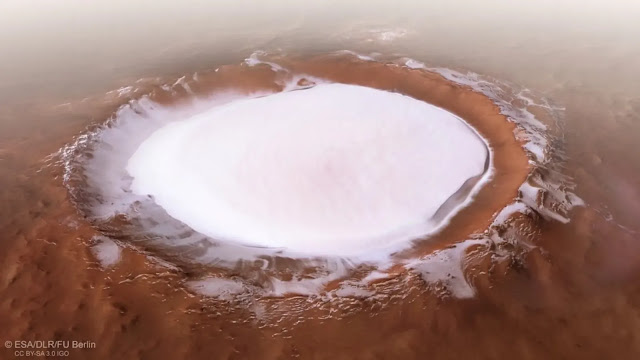This image from ESA’s Mars Express shows Korolev crater, an 82-kilometre-across feature found in the northern lowlands of Mars.
The European Space Agency calls the crater a “cold trap,” where air moving over the frigid ice is cooled, creating a kind of chilly barrier between the ice within the crater and warmer parts of the atmosphere — even in the summer.
This image from ESA’s Mars Express shows Korolev crater, an 82-kilometre-across feature found in the northern lowlands of Mars.
The European Space Agency calls the crater a “cold trap,” where air moving over the frigid ice is cooled, creating a kind of chilly barrier between the ice within the crater and warmer parts of the atmosphere — even in the summer.
This plan mosaic comprises five different observational strips that have been combined to form a single image, gathered over orbits 18042 (captured on 4 April 2018), 5726, 5692, 5654, and 1412. It covers a region centred at 165° E, 73° N, and has a resolution of approximately 21 metres per pixel.
This image was created using data from the nadir and colour channels of the High Resolution Stereo Camera (HRSC). The nadir channel is aligned perpendicular to the surface of Mars, as if looking straight down at the surface.
The crater contains about 2,200 cubic kilometres of water ice, frozen up to an estimated 2km (1.2 miles) deep.
The crater is named after Sergei Korolev, the chief rocket engineer and spacecraft designer, known as the father of Soviet space technology.
Mr Korolev worked on a number of well-known missions including the Sputnik programme – the first artificial satellites sent into orbit around the Earth in 1957.
Source: ESA


Comments
Post a Comment